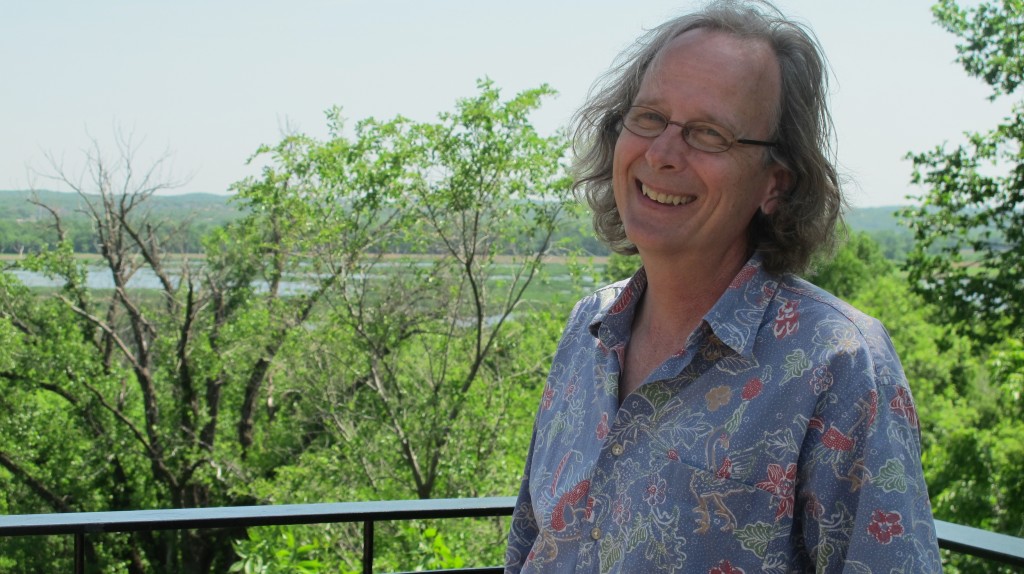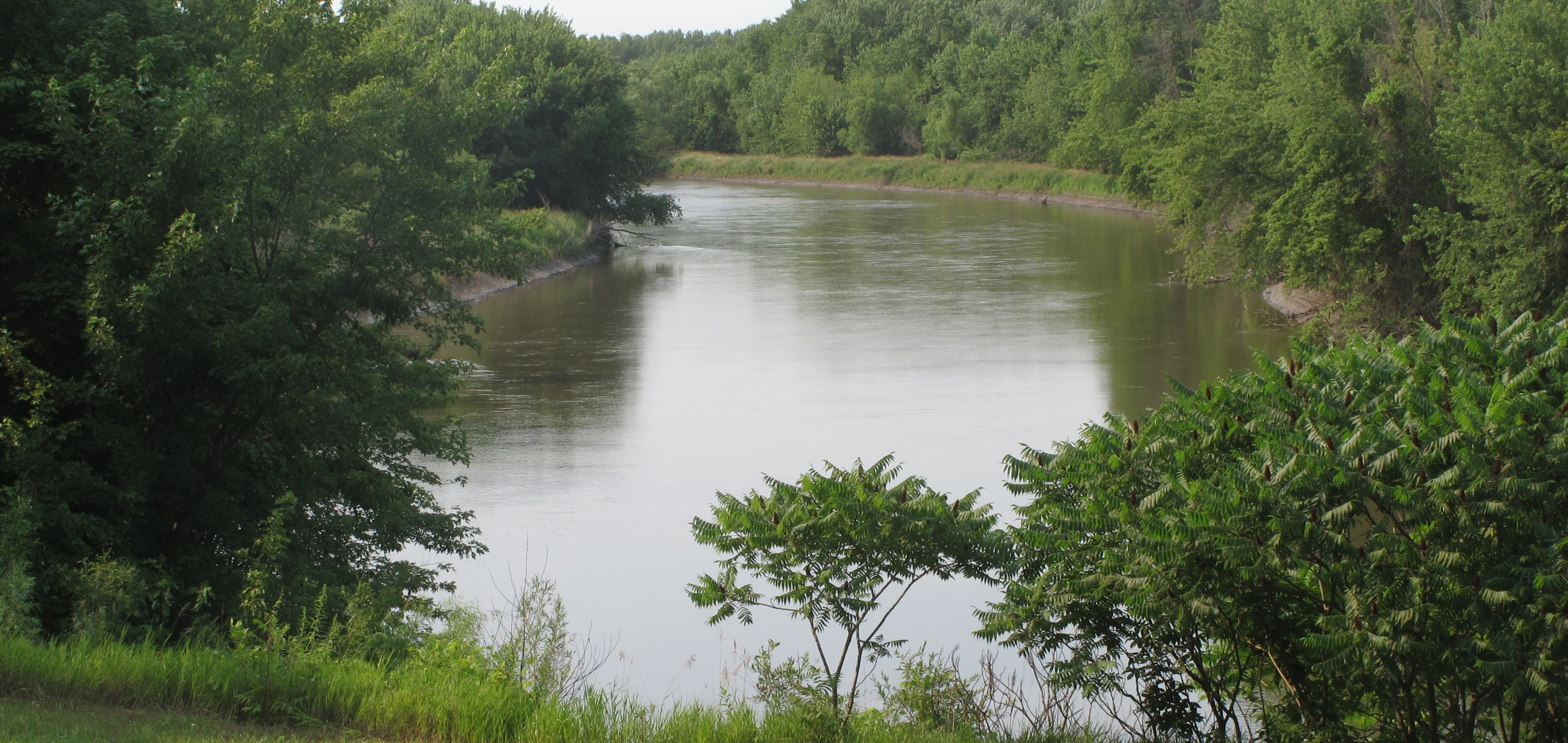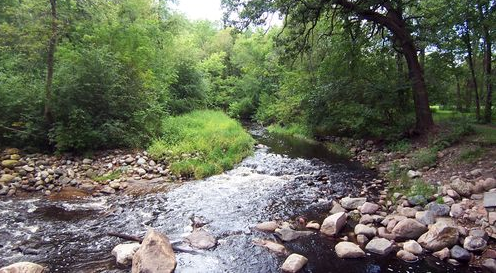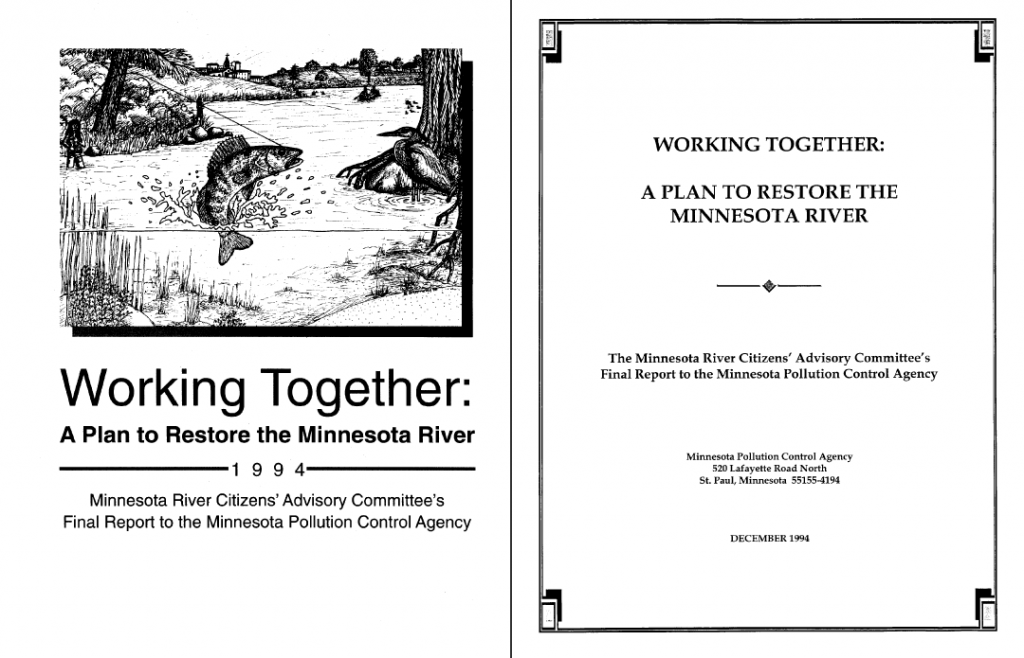John Hickman

For those of you who track the well-being of the Minnesota River, perhaps you’ve watched the prime-time documentary that aired last summer on the NBC-affiliate, KARE 11 “River Revival: Working Together to Save the Minnesota River.” It featured narrator Ron Schara from the popular Minnesota Bound television series and the photography and editing by Jon Carlson. Most importantly, it featured the voices of the many people involved in cleaning up the Minnesota River. 
Although it was his first documentary, the Executive Producer of that program has been telling the story of how passionate people can work together to clean up the Minnesota River watershed for years. He does it well and that’s not only due to his writing background. John’s been walking the talk since 1989.
John Hickman first became deeply connected to the Minnesota River in 1989 when he and his wife Linda bought a house on the bluff of a valley of one of its tributaries, the Nine Mile Creek. This stretch of paths and wilderness, near Bloomington, is where they enjoy excellent birding and scenic nature hikes.
Days after moving in, John learned of a large construction project in development by the Nine Mile Creek Watershed District. Concerned about its impact on the natural surroundings, he spent six months voluntarily investigating what could be done to protect these resources. He learned about watersheds, watershed districts, and all of the various units of government involved in decisions on how the water and land is used. He also learned that in Minnesota there’s a review process that requires project administrators to consider the environmental impacts of their work. A formal environmental review on the Nine Mile Creek project was requested by Hickman. It was granted.
After watching him in action, Bloomington City Council member and the President of the Friends of the Minnesota Valley, Coral Houle, invited John to join the board of directors of Friends of the Minnesota Valley.
Hickman believes “Friends” were instrumental in the 1970s in creating initial citizen support for the Minnesota River in a widespread outreach effort to establish the Minnesota Valley National Wildlife Refuge. Near the airport and the confluence of the Minnesota and Mississippi Rivers, visionary leader Ed Crozier of the U.S. Fish and Wildlife Service, and local Bloomington residents, Elaine Mellott and Maryalice Seal, got the ball rolling.
John Hickman from Anne Queenan on Vimeo.
I interviewed John at the Minnesota Valley National Wildlife Refuge, in the same spot where, twenty years earlier, another famous Minnesotan, Governor Arne Carlson, pronounced to the world an initiative to make the Minnesota River fishable and swimmable in ten years.
Shortly after Governor Carlson made this pronouncement in 1992, John was asked to serve on the Citizen’s Advisory Committee, convened by Lynne Kolze of the Minnesota Pollution Control Agency (MPCA) to study the results of THE MN RIVER ASSESSMENT PROJECT – an extensive body of research on the condition of the Minnesota River conducted with many local, state and federal natural resource agencies throughout four years (1988 – 1992). Active citizens from various walks of life served on the committee, including farmers and environmentalists. The committee made key recommendations to the MPCA on how to implement the research and work together to clean up the Minnesota River.
Hickman wrote its final report called, “Working Together – A Plan to Restore the Minnesota River”. He believes it was the next major development in the widespread effort to restore the Minnesota River. Here’s his account of what happened with its first recommendation – a program known as the Conservation Reserve Enhancement Program (CREP).
John Hickman on Top Recommendation from CAC Report from Anne Queenan on Vimeo.
Hickman points out the importance of seeing how all of the pieces fit together in a larger system of restoration. The name “Working Together” not only refers to all of the people in and out of the Minnesota River Basin, but it also refers to how all of those recommendations were designed to work together.
Here are the general headlines of those recommendations made in 1994. *
1. Restore the Minnesota River floodplain
2. Establish riparian areas along the major tributaries
3. Restore Wetlands
4. Manage Drainage Ditches and Storm Sewers as Tributaries
5. Improve land management practices
6. Enact a “bad actor” law
7. Establish mandatory land-use practices where necessary
8. Monitor water quality throughout the Minnesota River Basin
9. Establish a Minnesota River Commission to oversee the
Cleanup Effort
10. Establish Local Joint Powers Agreements
11. Improve Technical Assistance to Local Governments
12. Engage the General Public
13. Enforce Existing Laws
14. Support Changes in Federal Farm Policy
Some of these recommendations and the work reflected in the CAC report remain the framework for some of the current water quality restoration efforts in Minnesota today, reports Hickman.
Utopian idealism does not accurately reflect John Hickman’s outlook. He truly believes we are making progress toward cleaning up the Minnesota River. He is very proud of the efforts to date, yet admits frustration that people think it can happen overnight and frustration with the blame people put on the farmer instead of the system within which the farmer operates. He would like to remind all upstreamers and downstreamers to vote for representatives who will support policy to help fund these efforts. And he would like to see more support given to the people living within the Minnesota River Basin as they are the ones who need to do the work to clean it up.
Today, John focuses on projects related to improving the water quality of the Minnesota River Basin through the Friends of the Minnesota Valley and with Jon Carlson of H20 Videos. They recently recorded the story of how a community in New Auburn turned a dead lake, High Island Lake, into a prime walleye fishery.
Also on the Hickman To Do List is re-opening the old Cedar Avenue Bridge in Bloomington where the planes heard in this interview fly over and some of the best birding in the metropolitan area exists.
(Note by author: It is true! It is where I saw my very first sighting of a Prothonotary Warbler.) Photo by Dominic Sherony.
(*The full CAC report from 1994 will be made available, along with the transcripts to each interview for “Voices of the River,” at the Minnesota Historical Society. You can also contact John at his link, or the director of “Voices of the River,” Anne Queenan).




